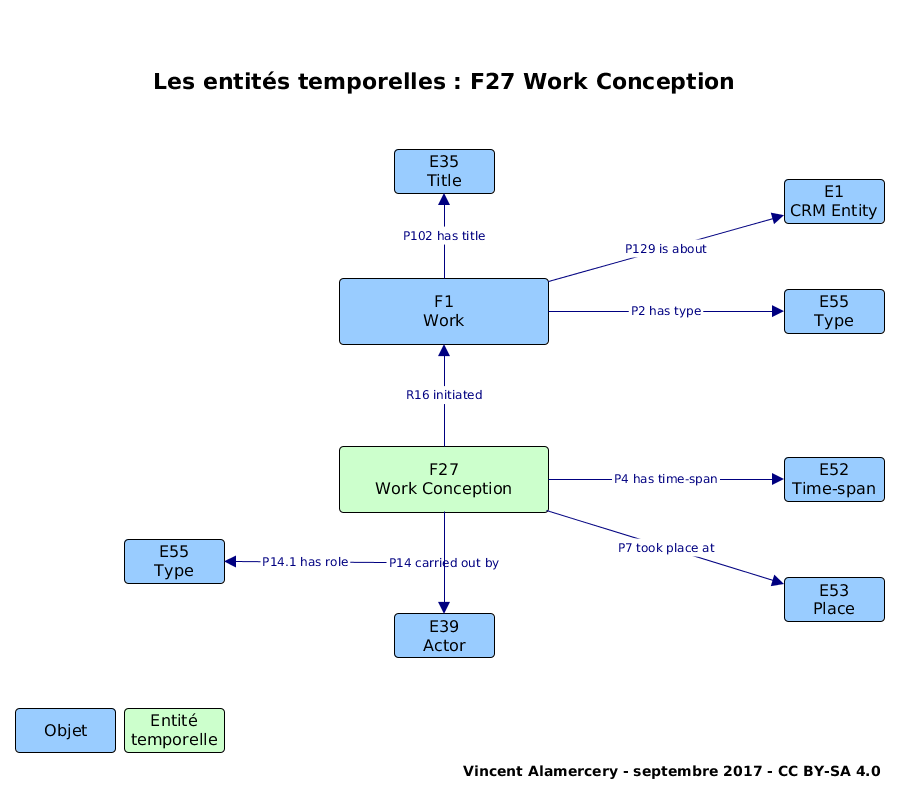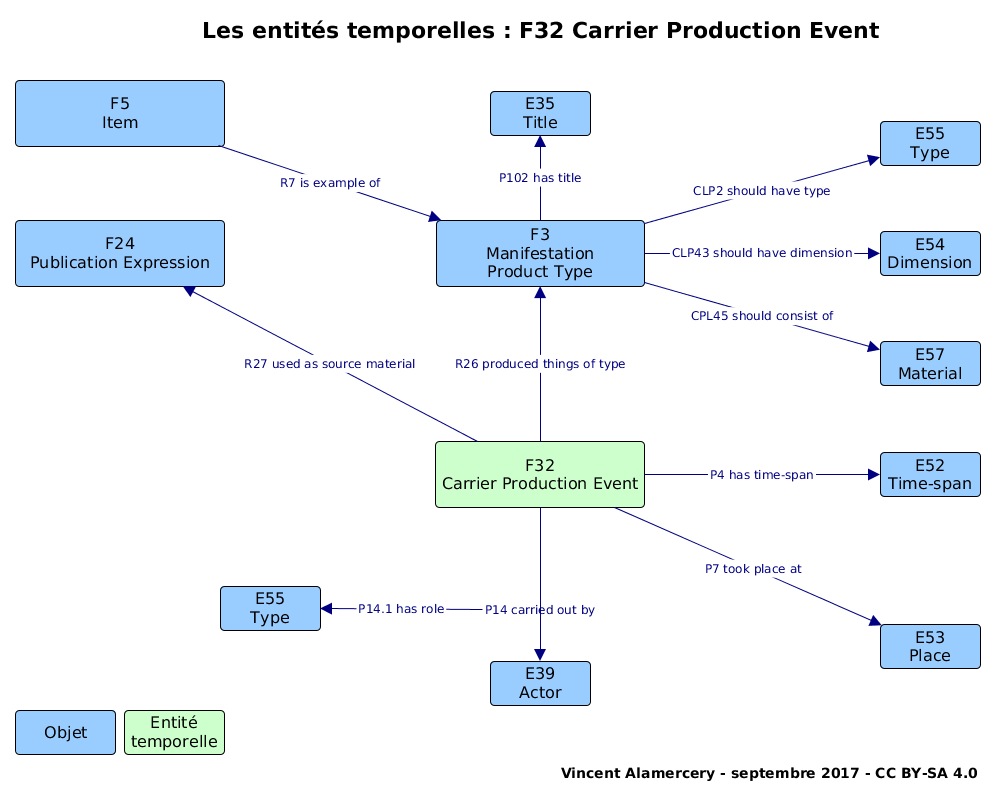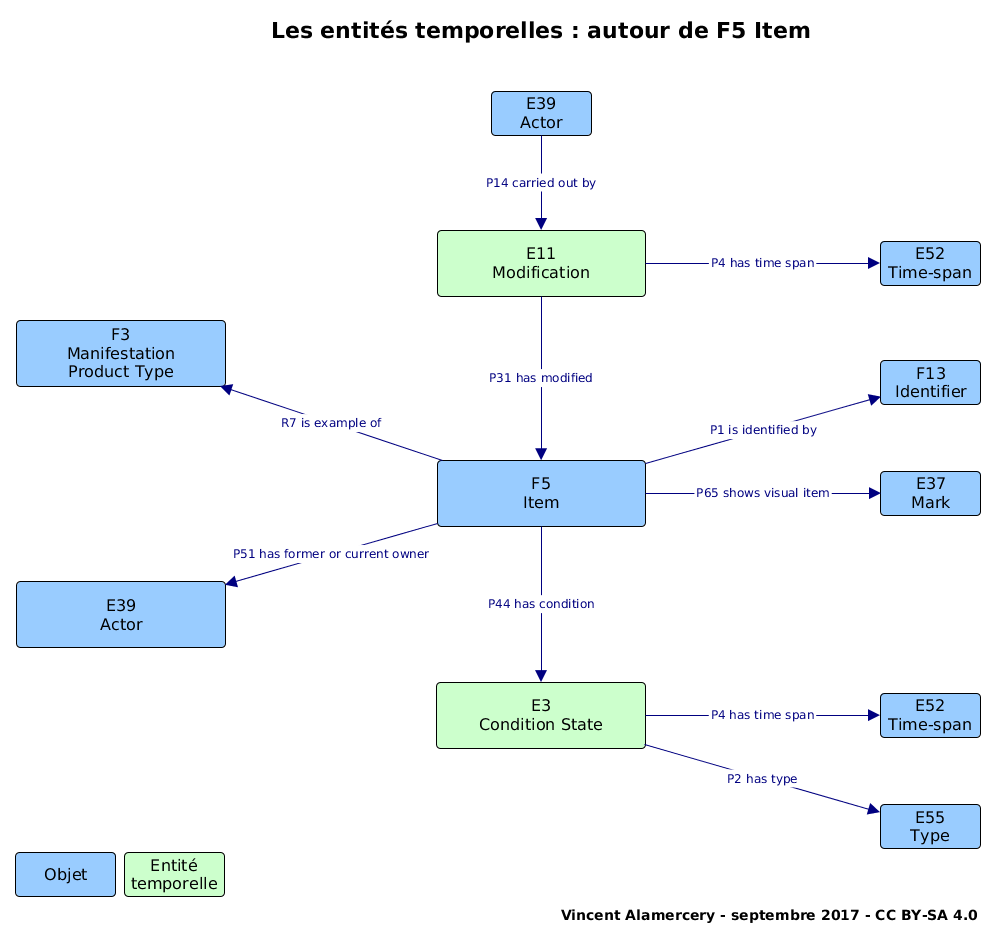To start our reflexion about bibliographic objects in CRMhist, here's a digest of FRBRoo 2.4 modelling of works intended for physical publication. I hope I well understood all the subtleties of FRBRoo. Don't hesitate to correct me. Click with right mouse button and select "Display image" to enlarge images.
Please note : FRBRoo 3.0 is in progress, some of the schemas could be different in the new version.
1. General schemas
A. From the work intended for publication to the item

This schema shows all the stages from the event of work conception by the author of the work to the physical book. Each temporal entity is carried by a different actor (author, publisher, printer) and corresponds to a specific object, except items. Although extremely well thought, this schema could be difficult to implement in production.
B. Case of a translated expression
This schema includes a translation stage. It is even more difficult to implement.
C. Simplified schemas

These two schemas show how it is possible to simplify the process a little bit.
2. Temporal entities
A. F27 Work Conception

F27 Work Conception allows to attach the author to F1 Work.
B. F28 Expression Creation

F28 Expression Creation allows to attach the translator to F2 Expression.
C. F30 Pubication Event

F30 Publication Event allows to attach the publisher to F24 Publication Expression.
D. F32 Carrier Production Event

F32 Carrier Production Event allows to attach the printer to F3 Manifestation Product Type.
3. Objects
The schemas of temporal entities show an issue for historians : object properties describe features that may change over time. It would be preferable to replace them by a temporal entity, something like "characteristics of an object".
A. Case of F5 Item

This case is perfect exemple to show the difficulty of using the object properties for a historian : the ownership of a book, its marks, its identifiers should be describe by a temporal entity. The only way in FRBRoo and CIDOC-CRM to describe the state of book is to use E3 Condition State. But in its actual conception, this class allow only very generic description of a condition state and is not entirely adequate.


